Search Result
Results for "
Aβ42,
" in MedChemExpress (MCE) Product Catalog:
5
Isotope-Labeled Compounds
| Cat. No. |
Product Name |
Target |
Research Areas |
Chemical Structure |
-
- HY-136866
-
|
|
γ-secretase
|
Neurological Disease
|
|
Aβ42-IN-2 is a γ-secretase modulator extracted from patent WO2016070107, compound example 36. Aβ42-IN-2 has an IC50 of 6.5 nM for Αβ42. Aβ42-IN-2 can be used for the research of Alzheimer's disease .
|
-
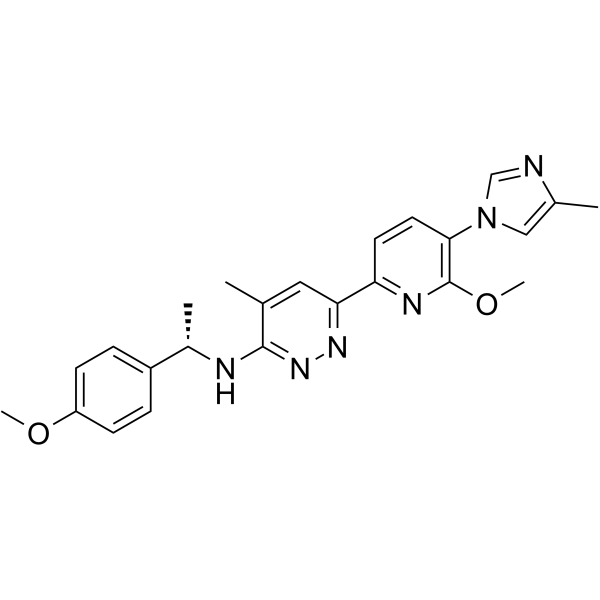
-
- HY-149763
-
|
|
Amyloid-β
|
Neurological Disease
|
|
Aβ42 agonist-1 (compound 7a) is a small molecule compound that can promote Aβ42 aggregation. Aβ42 agonist-1 can interact with Aβ42 oligomers and pentamers to promote nontoxic aggregate self-assembly and rapid fibril formation. Aβ42 agonist-1 prevents Aβ42-induced cytotoxicity in HT22 hippocampal neuronal cells .
|
-

-
- HY-149764
-
|
|
Amyloid-β
|
Neurological Disease
|
|
Aβ42 agonist-2 (compound 7b) is a small molecule compound that can promote Aβ42 aggregation. Aβ42 agonist-2 can interact with Aβ42 oligomers and pentamers to promote nontoxic aggregate self-assembly and rapid fibril formation. Aβ42 agonist-2 prevents Aβ42-induced cytotoxicity in HT22 hippocampal neuronal cells .
|
-
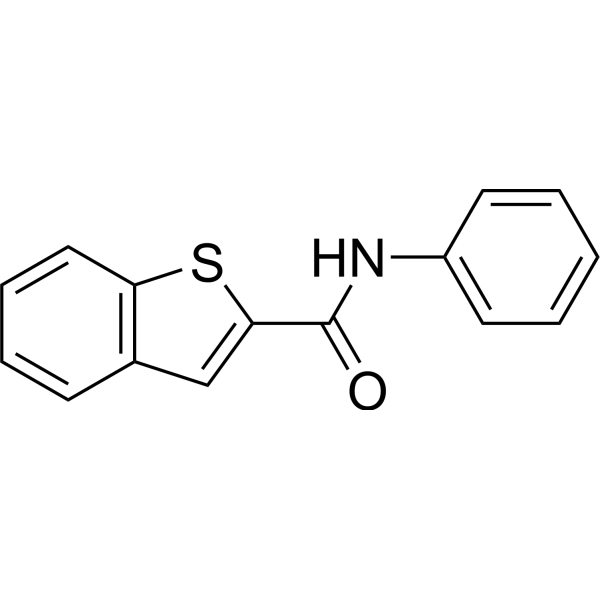
-
- HY-130609A
-
|
|
γ-secretase
|
Neurological Disease
|
|
Aβ42-IN-1 free base (compound 1v) is an orally active, high brain exposure γ-secretase modulator. Aβ42-IN-1 free base potently reduces Aβ42 levels with an IC50 value of 0.091 µM, and significantly reduces brain Aβ42 levels in mice. Aβ42-IN-1 free base is a promising compound for the treatment of Alzheimer’s disease .
|
-

-
- HY-130609
-
|
|
γ-secretase
|
Neurological Disease
|
|
Aβ42-IN-1, compound 1v, is a novel, potent and orally active γ-secretase modulator (GSM). Aβ42-IN-1 potently reduced Aβ42 levels with an IC50 value of 0.091 µM without CYP3A4 inhibition. Aβ42-IN-1 shows a sustained pharmacokinetic profile.
|
-
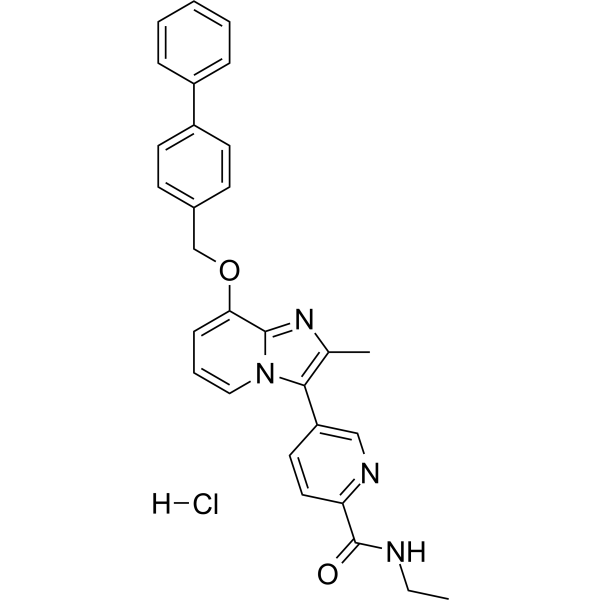
-
- HY-161109
-
-
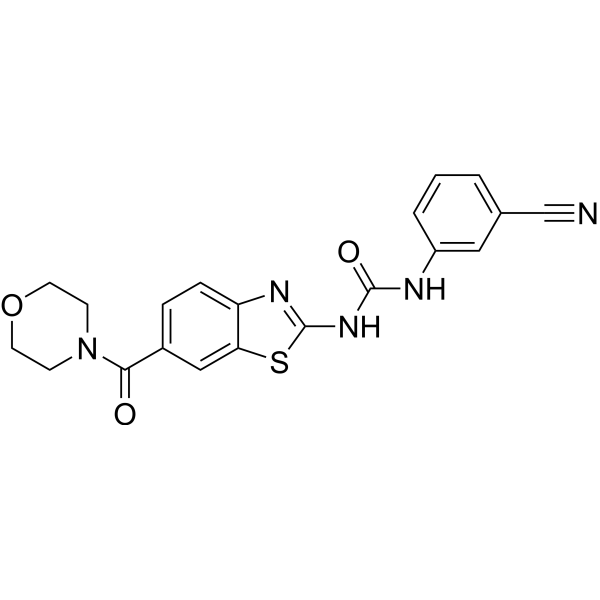
-
- HY-161110
-
|
|
Amyloid-β
|
Neurological Disease
|
|
Aβ42-IN-5 (Compound 0152) is an oral active amyloid precursor protein (APP) degrader that can reduce Aβ42 in Alzheimer's disease iPSC neurons. Aβ42-IN-5 can bind CAPRIN1 and APP and enhance the protein-protein interaction .
|
-
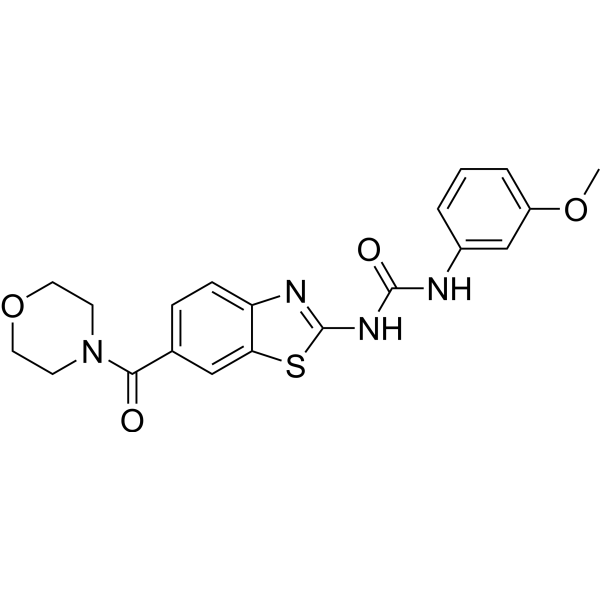
-
- HY-111267
-
-
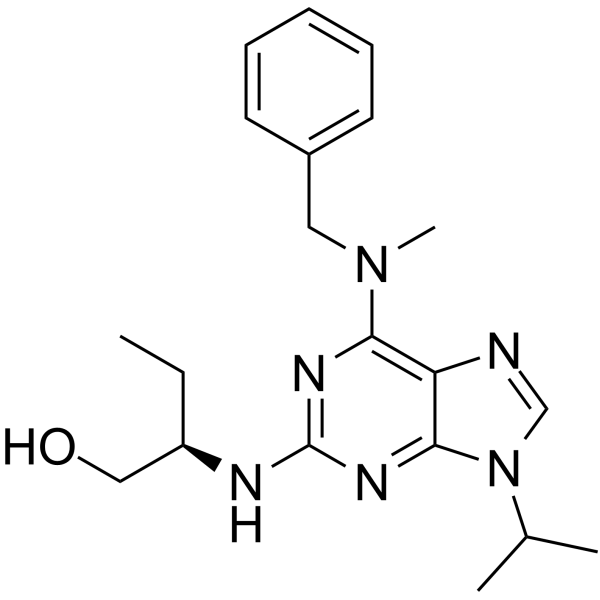
-
- HY-P4295
-
|
PADK
|
Cathepsin
γ-secretase
|
Neurological Disease
|
|
Z-Phe-Ala-diazomethylketone binds directly to Aβ42 monomers and small oligomers. Z-Phe-Ala-diazomethylketone inhibits the formation of Aβ42 dodecamers and inhibits Aβ42 fibril formation in the solution. Z-Phe-Ala-diazomethylketone has the potential for neurodegenerative disorders research .
|
-
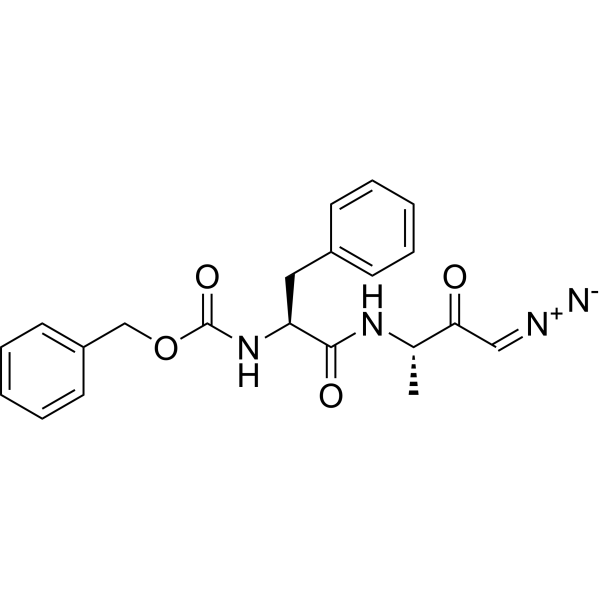
-
- HY-144752
-
|
Cyclic spermine
|
Amyloid-β
|
Neurological Disease
|
|
cSPM (Cyclic spermine) is a Aβ42 inhibitor. cSPM could suppress the aggregation of three different peptides, Aβ42, amylin and insulin, and decreases cytotoxicity .
|
-
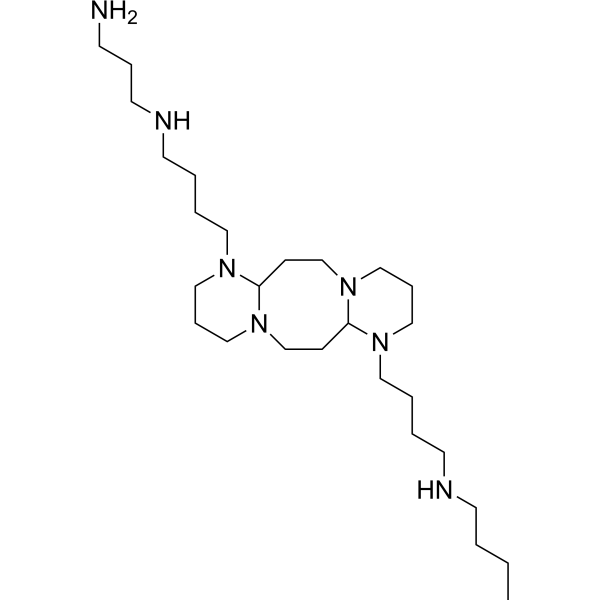
-
- HY-111911
-
|
|
Amyloid-β
|
Neurological Disease
|
|
Xanthocillin X permethyl ether is a natural compound isolated from fungal extracts, with Aβ-42 lowering activity .
|
-
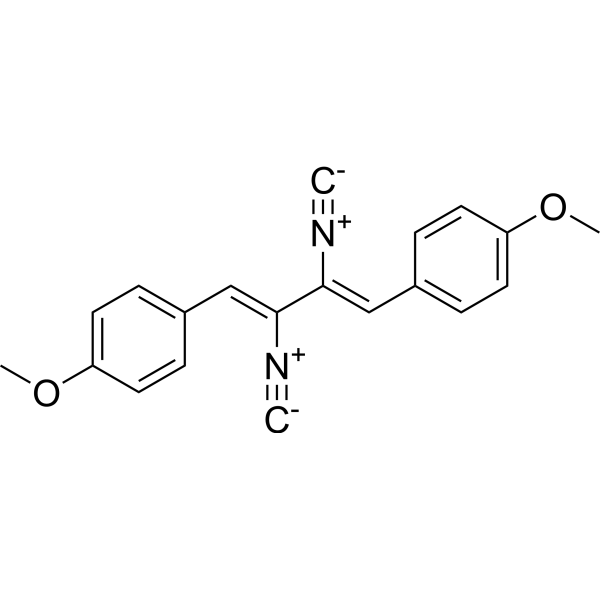
-
- HY-146140
-
|
|
Amyloid-β
|
Neurological Disease
|
|
Aβ-IN-4 (compound 12) is a potent amyloid β (Aβ) inhibitor. Aβ-IN-4 inhibits Aβ42 aggregation. However, Aβ-IN-4 can not alleviate the neurotoxicity of Aβ42 in SH-SY5Y cells. Aβ-IN-4 can not change the aggregation state of Aβ42 into a nontoxic one .
|
-
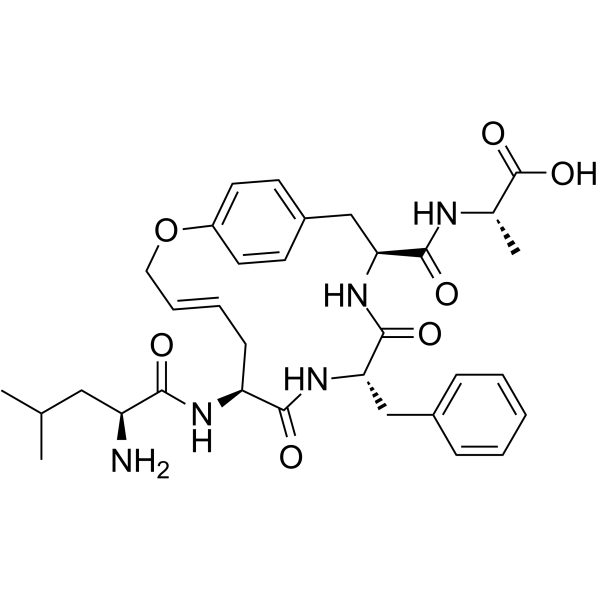
-
- HY-146139
-
|
|
Amyloid-β
|
Neurological Disease
|
|
Aβ-IN-3 (compound 1) is a potent amyloid β (Aβ) inhibitor. Aβ-IN-3 inhibits Aβ42 aggregation. However, Aβ-IN-3 can not alleviate the neurotoxicity of Aβ42 in SH-SY5Y cells. Aβ-IN-3 can not change the aggregation state of Aβ42 into a nontoxic one .
|
-
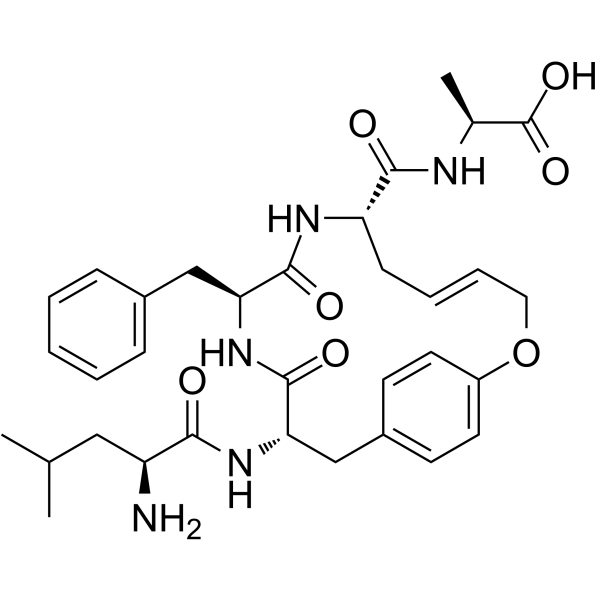
-
- HY-N6640
-
|
20-Hydroxyeedysone 2-acetate
|
Amyloid-β
|
Neurological Disease
|
|
2-O-Acetyl-20-hydroxyecdysone, an ecdysterones in insects and terrestrial plants, inhibits amyloid-β42 (Aβ42)-induced cytotoxicity. 2-O-Acetyl-20-hydroxyecdysone could decrease Aβ oligomer formation through promotion of fibrogenesis, transforming Aβ oligomers to the low-toxicity fibrils .
|
-
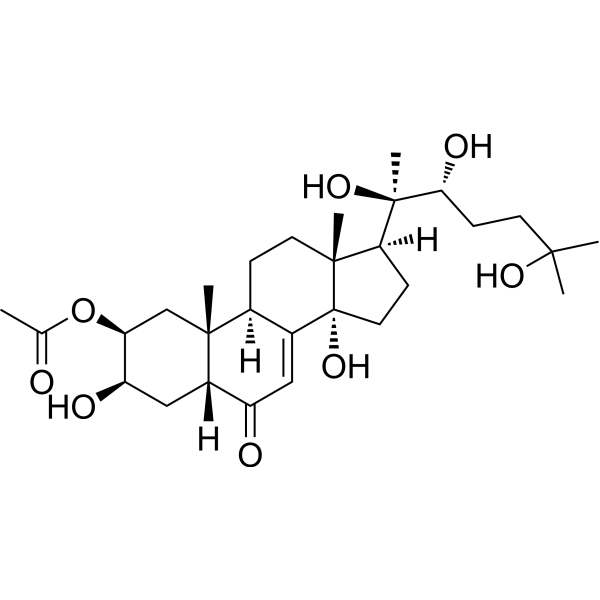
-
- HY-103241
-
|
|
Amyloid-β
ATM/ATR
Phosphatase
Apoptosis
|
Neurological Disease
Cancer
|
|
Ro 90-7501 is an amyloid β42 (Aβ42) fibril assembly inhibitor that reduces Aβ42-induced cytotoxicity (EC50 of 2 μM). Ro 90-7501 inhibits ATM phosphorylation and DNA repair. RO 90-7501 selectively enhances toll-like receptor 3 (TLR3) and RIG-I-like receptor (RLR) ligand-induced IFN-β gene expression and antiviral response . Ro 90-7501 also inhibits protein phosphatase 5 (PP5) in a TPR-dependent manner . Ro 90-7501 has significant radiosensitizing effects on cervical cancer cells .
|
-
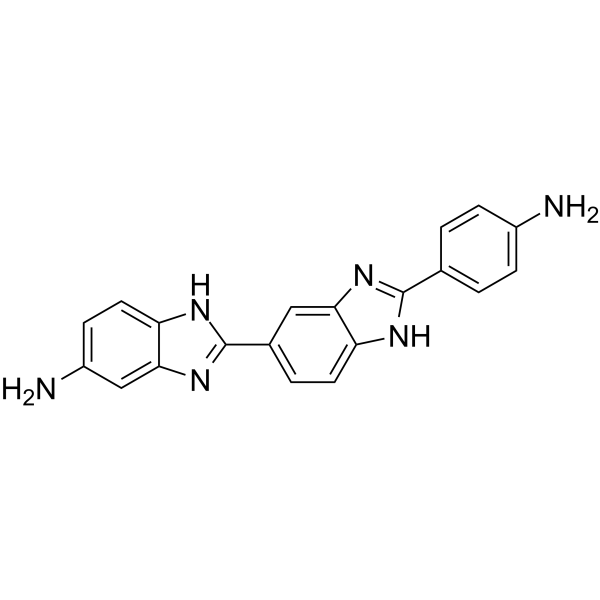
-
- HY-108714
-
-
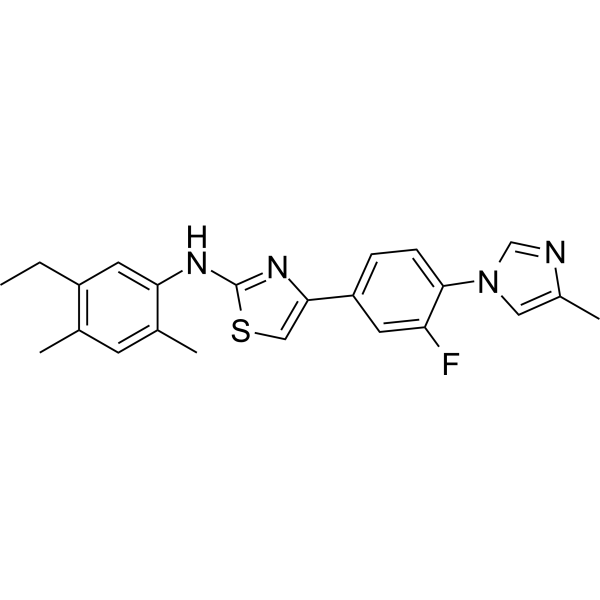
-
- HY-112282
-
-
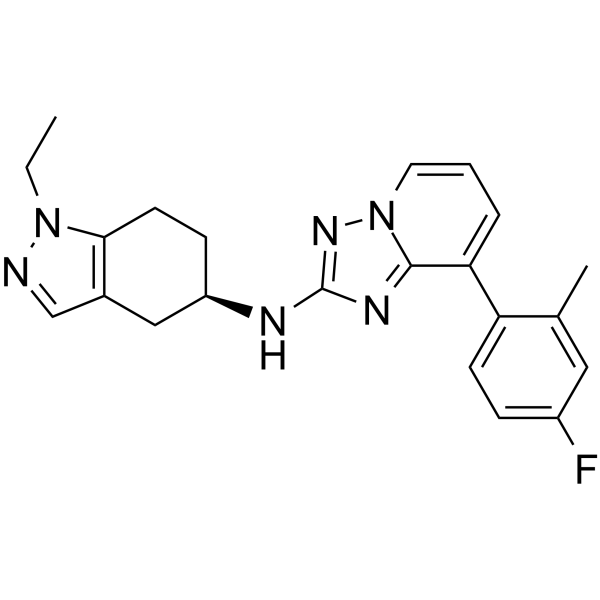
-
- HY-P3793
-
|
|
Amyloid-β
|
Neurological Disease
|
|
Amyloid β-Protein (33-42) TFA is the residues 33-42 fragment of the β-amyloid protein. Amyloid β-Protein (33-42) TFA inhibits Aβ42-induced toxicity .
|
-
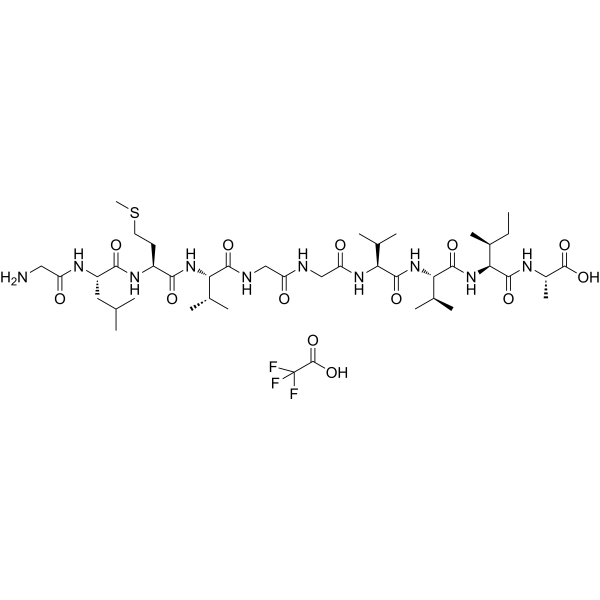
-
- HY-153255
-
|
|
Beta-secretase
|
Neurological Disease
|
|
BACE1-IN-13 (Compound 36) is an orally active BACE1 inhibitor with an IC50 value of 2.9 nM. BACE1-IN-13 is highly potent in hAβ42 cell (IC50 = 1.3 nM). BACE1-IN-13 has cardiovascularly safty and elicits sustained Aβ42 reduction in mouse and dog animal models .
|
-
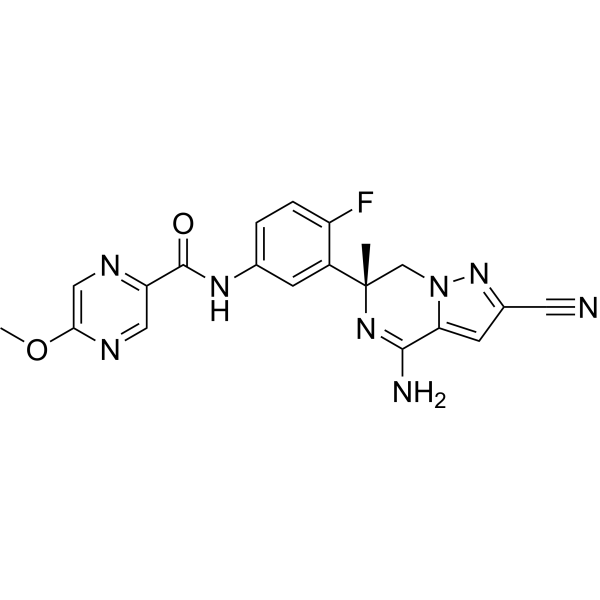
-
- HY-146151
-
|
|
γ-secretase
Amyloid-β
|
Neurological Disease
|
|
γ-Secretase modulator 12 (Compound 1a) is a γ-secretase modulator that can selectively decrease amyloid-β42 (Aβ42) levels (IC50 of 0.39 µM). γ-Secretase modulator 12 can be used for Alzheimer’s disease research. γ-Secretase modulator 12 has a good brain/plasma ratio (Kp, brain = 0.72) in mice .
|
-
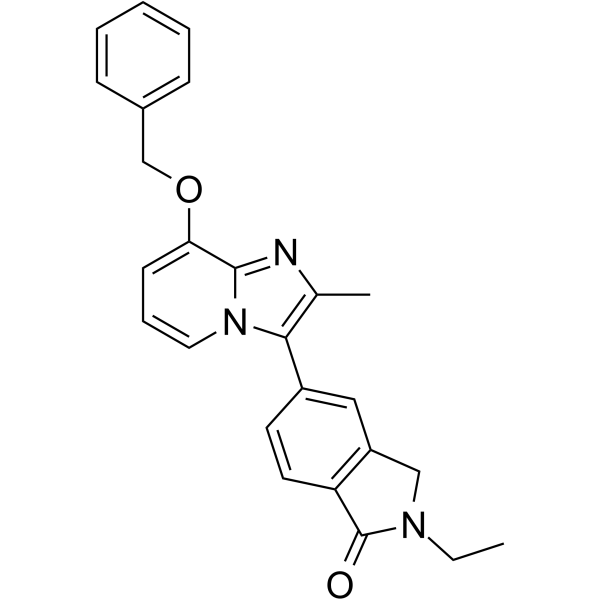
-
- HY-N0373
-
|
|
Amyloid-β
Apoptosis
NOD-like Receptor (NLR)
|
Neurological Disease
|
|
Licochalcone B is an extract from the root of Glycyrrhiza uralensis. Licochalcone B inhibits amyloid β (42) self-aggregation (IC50=2.16 μM) and disaggregate pre-formed Aβ42 fibrils, reduce metal-induced Aβ42 aggregation through chelating metal ionsLicochalcone B inhibits phosphorylation of NF-κB p65 in LPS signaling pathway. Licochalcone B inhibits growth and induces apoptosis of NSCLC cells. Licochalcone B specifically inhibits the NLRP3 inflammasome by disrupting NEK7‐NLRP3 interaction .
|
-

-
- HY-117482
-
|
|
γ-secretase
|
Neurological Disease
|
|
BPN-15606 is a highly potent, orally active γ-secretase modulator (GSM), attenuates the production of Aβ42 and Aβ40 by SHSY5Y neuroblastoma cells with IC50 values of 7 nM and 17nM, respectively. BPN-15606 lowers Aβ42 and Aβ40 levels in the central nervous system of rats and mice. BPN-15606 has acceptable PK/PD properties, including bioavailability, half-life, and clearance .
|
-
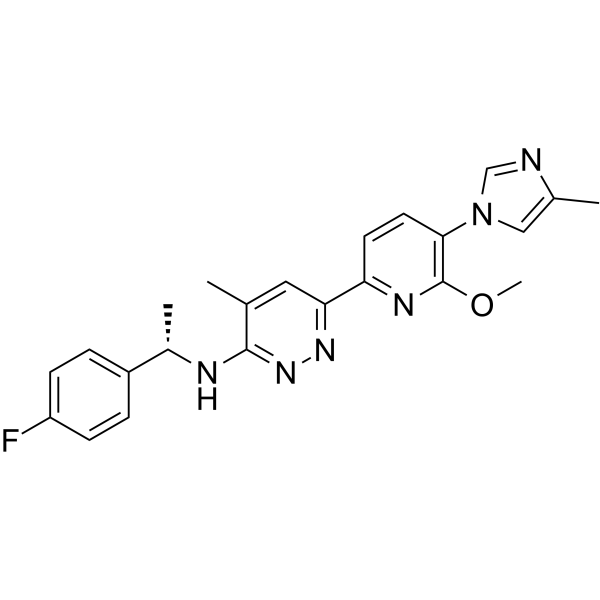
-
- HY-117482A
-
|
|
γ-secretase
|
Neurological Disease
|
|
BPN-15606 besylate is a highly potent, orally active γ-secretase modulator (GSM), attenuates the production of Aβ42 and Aβ40 by SHSY5Y neuroblastoma cells with IC50 values of 7 nM and 17nM, respectively. BPN-15606 besylate lowers Aβ42 and Aβ40 levels in the central nervous system of rats and mice. BPN-15606 besylate has acceptable PK/PD properties, including bioavailability, half-life, and clearance .
|
-
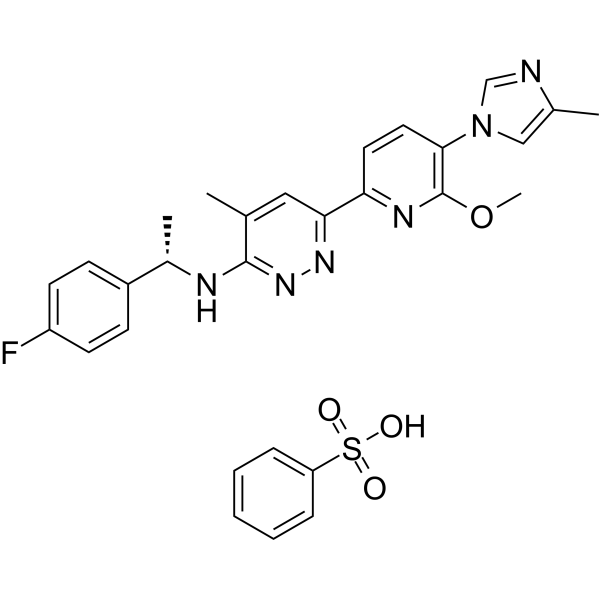
-
- HY-P3307
-
|
|
Tau Protein
|
Neurological Disease
|
|
Ac-Val-Gln-aIle-Val-aTyr-Lys-NH2 is serum stable, non-toxic to neuronal cells, and selectivity inhibits the fibrilization of tau over Aβ42.
|
-

-
- HY-156179
-
|
|
Amyloid-β
|
Neurological Disease
|
|
DDC 2′,3′-O-disulfate (compound 4) prevents the fibrillization and oligomerization of Aβ42. DDC 2′,3′-O-disulfate has the potential for Alzheimer's disease (AD) research .
|
-
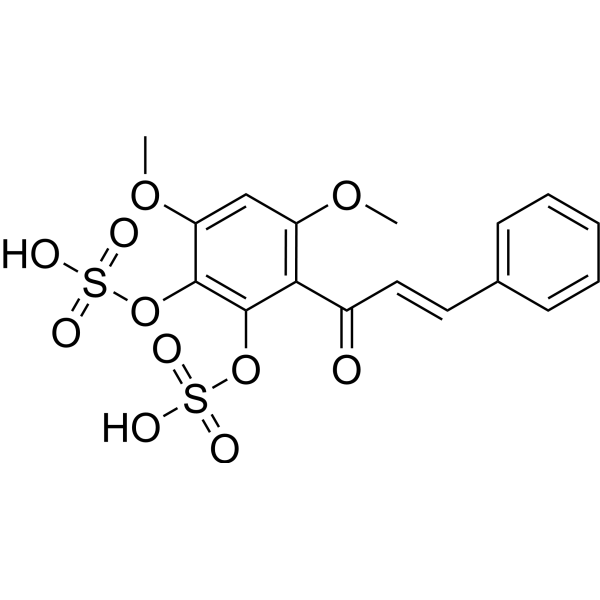
-
- HY-N0116
-
|
Natural Black 1; Haematoxylin
|
Amyloid-β
|
Others
|
|
Hematoxylin (Natural Black 1), a naturally occurring flavonoid compound derived from Caesalpinia sappan Linn.. Hematoxylin is a nuclear stain in histology and is also a potent Aβ42 fibrillogenesis inhibitor with an IC50 of 1.6 μM.
|
-
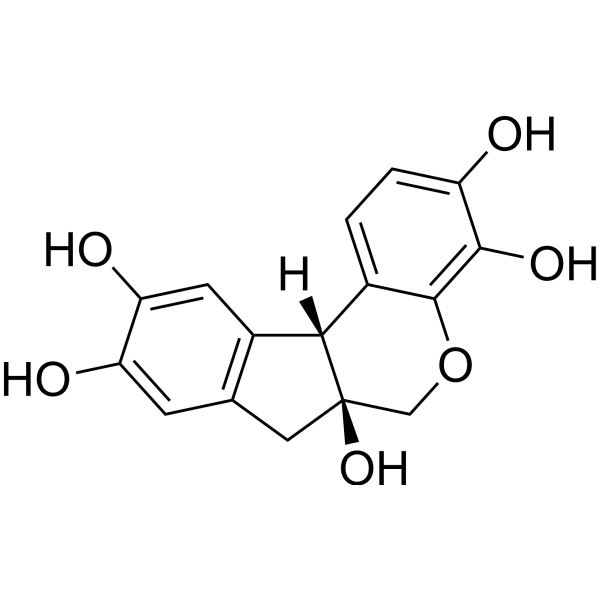
-
- HY-128581
-
|
|
γ-secretase
|
Neurological Disease
|
|
γ-Secretase modulator 4 is a potent γ-secretase modulator, reduces the Aβ42 level with IC50s of 0.014 μM and 0.017 μM in human and mouse, respectively .
|
-
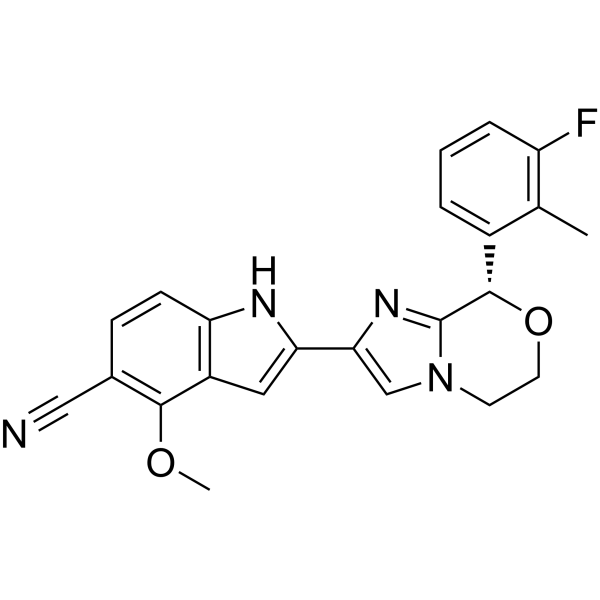
-
- HY-10016
-
|
|
γ-secretase
|
Neurological Disease
|
|
E 2012 is a potent gamma (γ) secretase modulator without affecting Notch processing. E 2012 inhibits 3β-hydroxysterol Δ24-reductase (DHCR24) at the final step in the cholesterol biosynthesis. E 2012 aims at Alzheimer's disease by reduction of amyloid β-42, and induces cataract following repeated doses in the rat .
|
-
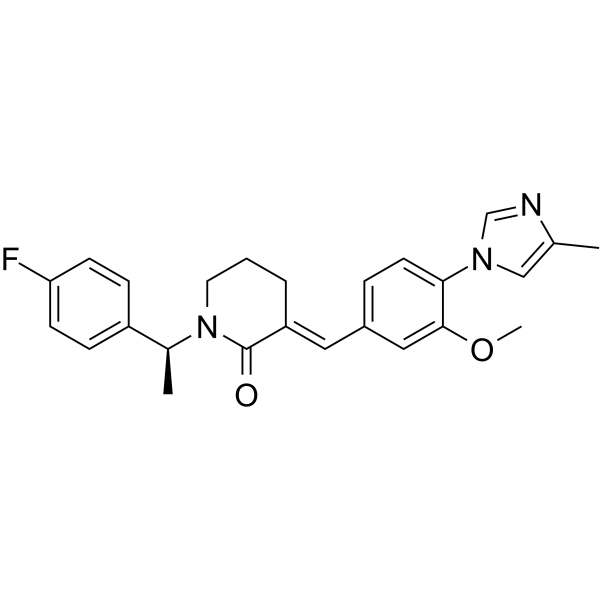
-
- HY-B0034
-
|
E2020
|
Cholinesterase (ChE)
|
Neurological Disease
Cancer
|
|
Donepezil Hydrochloride (E2020) is a reversible, selective AChE inhibitor with an IC50 of 6.7 nM for AChE activity. Donepezil shows high selectivity for AChE over BuChE . Donepezil exhibits neuroprotective effect on Aβ42 neurotoxicity .
|
-
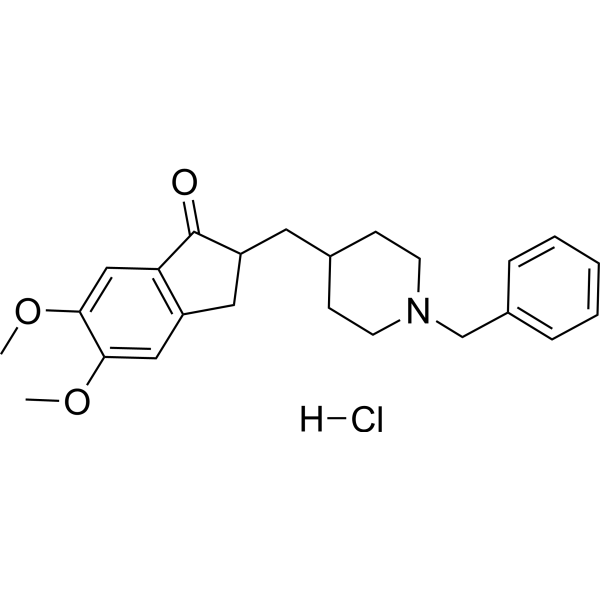
-
- HY-108499
-
-
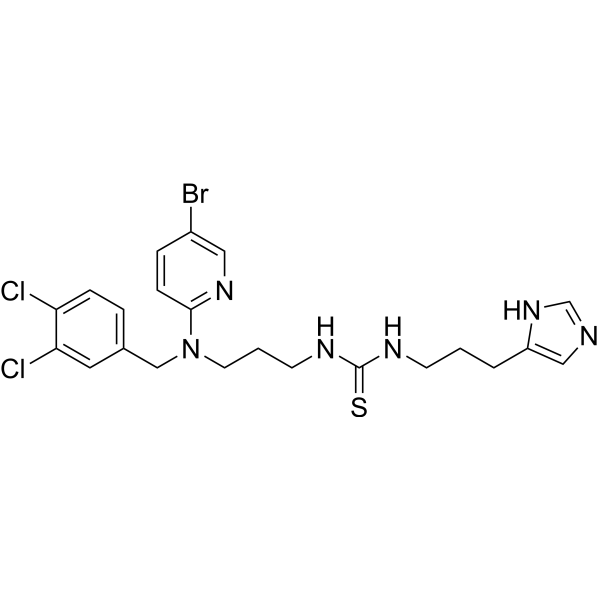
-
- HY-153986
-
|
|
Others
|
Neurological Disease
|
|
AEP-IN-2 is an asparagine endopeptidase (AEP) inhibitor via block AEP cleavage of APP and Tau. AEP-IN-2 has oral activity and decreases Aβ40 and Aβ42 and p-Tau levels .
|
-
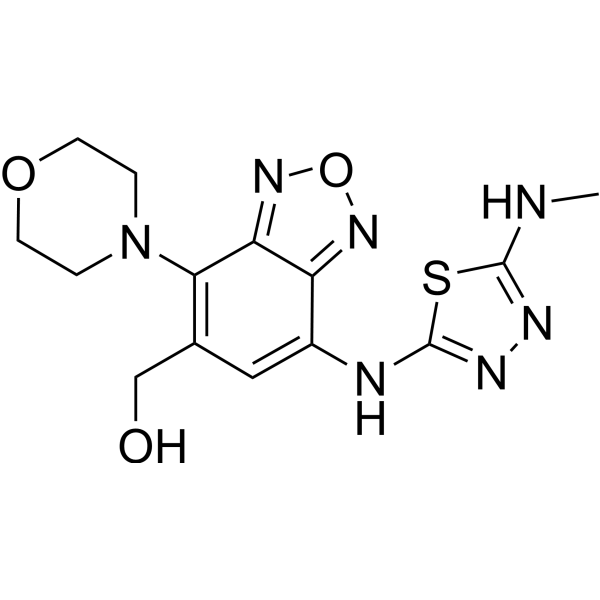
-
- HY-156180
-
|
|
Drug Metabolite
|
Neurological Disease
|
|
DDC 3′-O-β-D glucuronide (compound 5) is a drug metabolite that can prevent the fibrillization and oligomerization of Aβ42. DDC 3′-O-β-D glucuronide has potential for the research of Alzheimer's disease .
|
-
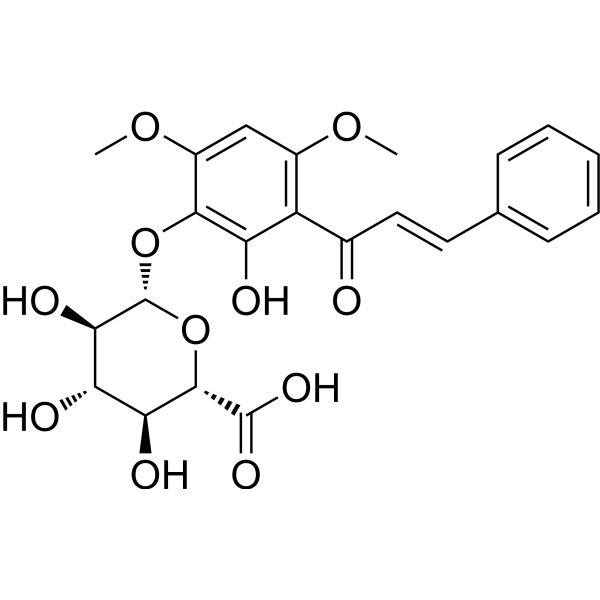
-
- HY-146251
-
|
|
Cholinesterase (ChE)
Amyloid-β
|
Neurological Disease
|
|
BuChE-IN-6 (compound 1b) is a potent and selective BuChE (butyrylcholinesterase) inhibitor, with IC50 values of 0.46 and 0.51 μM for eqBuChE and hBuChE, respectively. BuChE-IN-6 also inhibits Aβ42 self-aggregation .
|
-
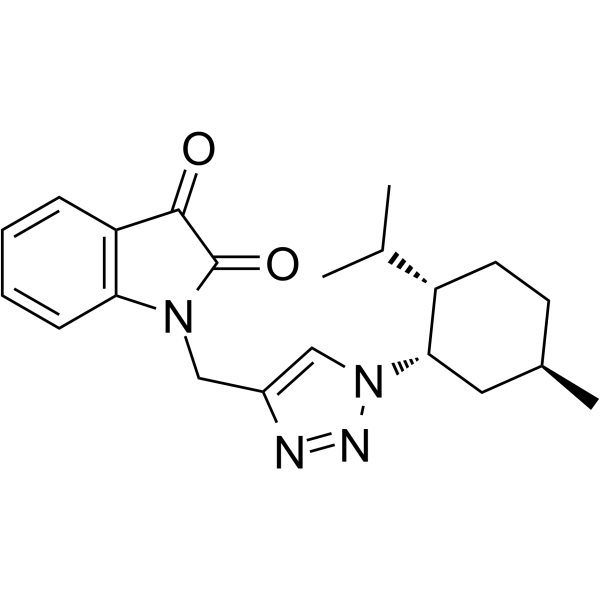
-
- HY-P990078
-
|
LY3372993
|
Amyloid-β
|
Neurological Disease
|
|
Remternetug is a human immunoglobulin G1-kappa, anti-APP (amyloid beta A4 precursor protein) Aβ42 N3pGlu peptide monoclonal antibody. Remternetug recognizes a pyroglutamated form of Aβ that aggregates into amyloid plaques .
|
-

-
- HY-B1786A
-
|
|
γ-secretase
Amyloid-β
|
Neurological Disease
|
|
(E/Z)-Sulindac sulfide is a potent γ-secretase modulator (GSM). (E/Z)-Sulindac sulfide selectively reduces Aβ42 production in favor of shorter Aβ species. (E/Z)-Sulindac sulfide can be used for researching Alzheimer’s disease .
|
-
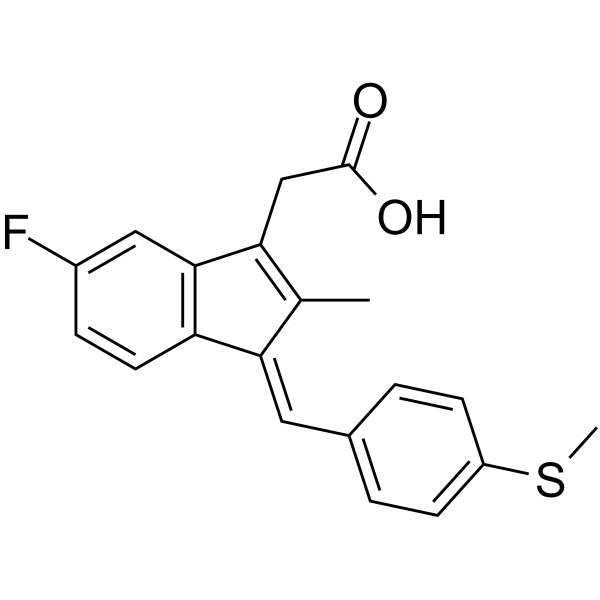
-
- HY-150049
-
|
|
Amyloid-β
|
Neurological Disease
|
|
γ-Secretase modulator 13 (compound 4) is a gamma-secretase modulator (GSMs) that inhibits the production of the aggregated amyloid β-peptide Aβ42 with an IC50 value of 163 nM. γ-Secretase modulator 13 can be used in the study of Alzheimer's disease .
|
-
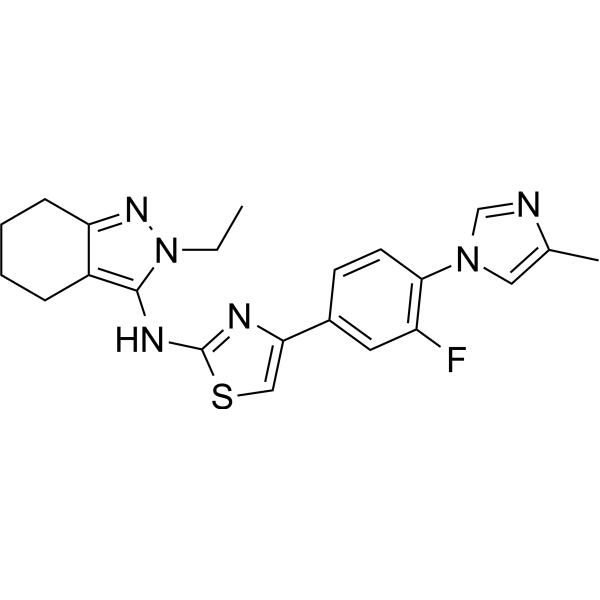
-
- HY-B0034S1
-
|
E2020-d4
|
Cholinesterase (ChE)
|
Neurological Disease
|
|
Donepezil-d4 (hydrochloride) is the deuterium labeled Donepezil hydrochloride. Donepezil Hydrochloride (E2020) is a reversible, selective AChE inhibitor with an IC50 of 6.7 nM for AChE activity. Donepezil shows high selectivity for AChE over BuChE[1]. Donepezil exhibits neuroprotective effect on Aβ42 neurotoxicity[2].
|
-
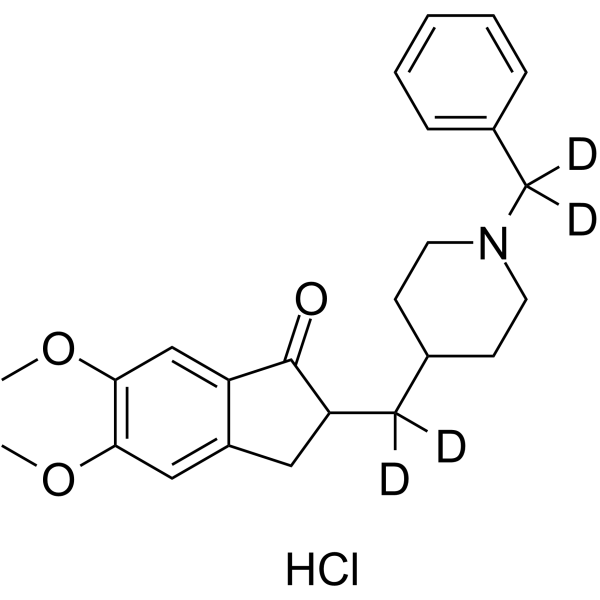
-
- HY-B0034S
-
|
E2020-d5
|
Cholinesterase (ChE)
|
Neurological Disease
|
|
Donepezil-d5 (hydrochloride) is deuterium labeled Donepezil (Hydrochloride). Donepezil Hydrochloride (E2020) is a reversible, selective AChE inhibitor with an IC50 of 6.7 nM for AChE activity. Donepezil shows high selectivity for AChE over BuChE[1]. Donepezil exhibits neuroprotective effect on Aβ42 neurotoxicity[2].
|
-
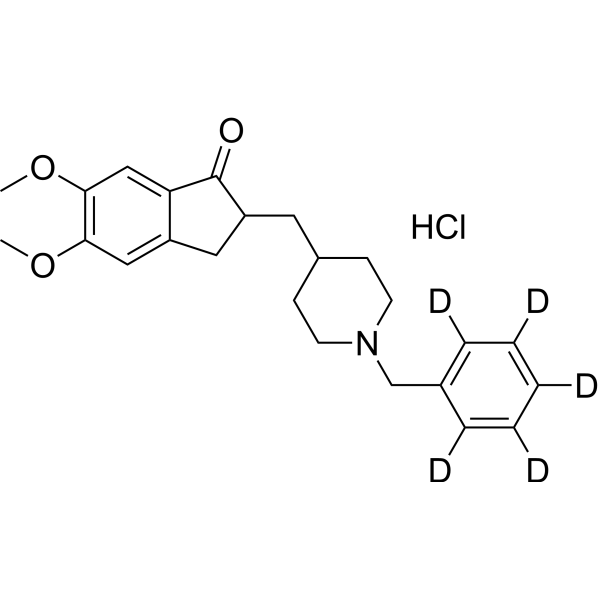
-
- HY-N12321
-
|
|
Others
|
Metabolic Disease
|
|
2',3'-Dihydroxy-4',6'-dimethoxychalcone (compound 1) can inhibit Amyloid β-protein (Aβ42) fibrillization and aggregation. 2',3'-Dihydroxy-4',6'-dimethoxychalcone has oral activity and can be detected in the brain .
|
-
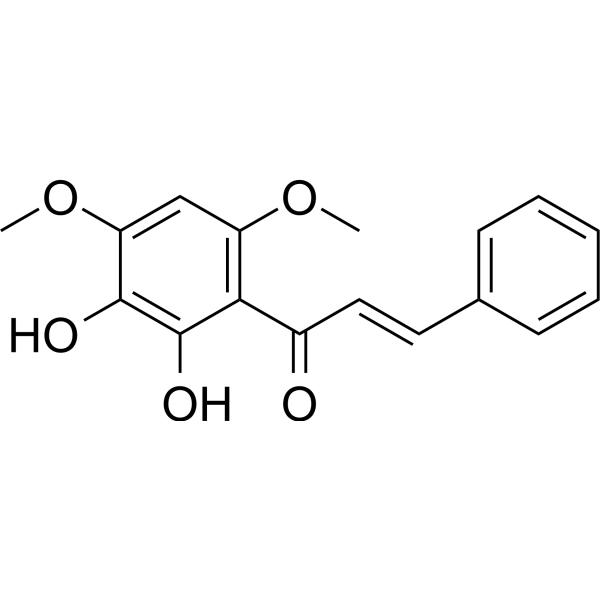
-
- HY-W010041
-
|
|
Amyloid-β
Endogenous Metabolite
|
Neurological Disease
|
|
Scyllo-Inositol, an amyloid inhibitor, potentialy inhibits α-synuclein aggregation. Scyllo-Inositol stabilizes a non-fibrillar non-toxic form of amyloid-β peptide (Aβ42) in vitro, reverses cognitive deficits, and reduces synaptic toxicity and lowers amyloid plaques in an Alzheimer's disease mouse model .
|
-
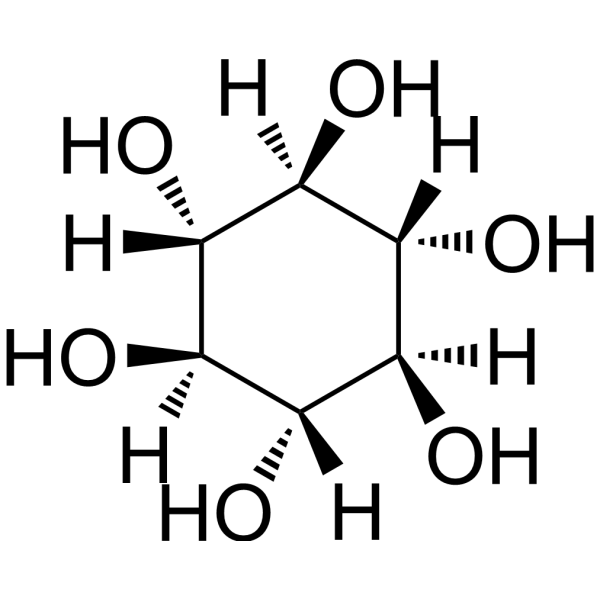
-
- HY-150050
-
|
|
Amyloid-β
|
Neurological Disease
|
|
gamma-secretase modulator 5 (compound 22d) is a brain-penetrant gamma-secretase modulator (GSMs) that inhibits the production of the aggregated amyloid β-peptide Aβ42 with an IC50 value of 60 nM. gamma-secretase modulator 5 can be used in the study of Alzheimer's disease .
|
-
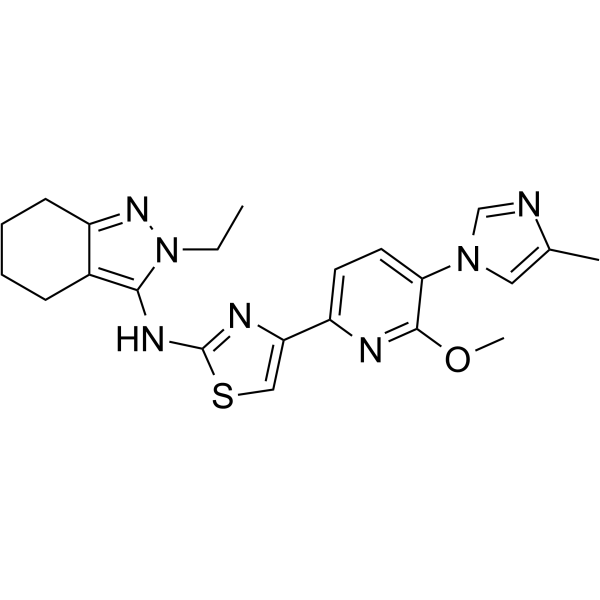
-
- HY-10009
-
|
LY450139
|
γ-secretase
Amyloid-β
Notch
|
Neurological Disease
|
|
Semagacestat is a γ-secretase inhibitor, inhibits β-amyloid (Aβ42), Aβ38 and Aβ40 with IC50s of 10.9, 12 and 12.1 nM, respectively; also inhibits Notch signaling with IC50 of 14.1 nM. Semagacestat can be used for the research of alzheimer's disease .
|
-
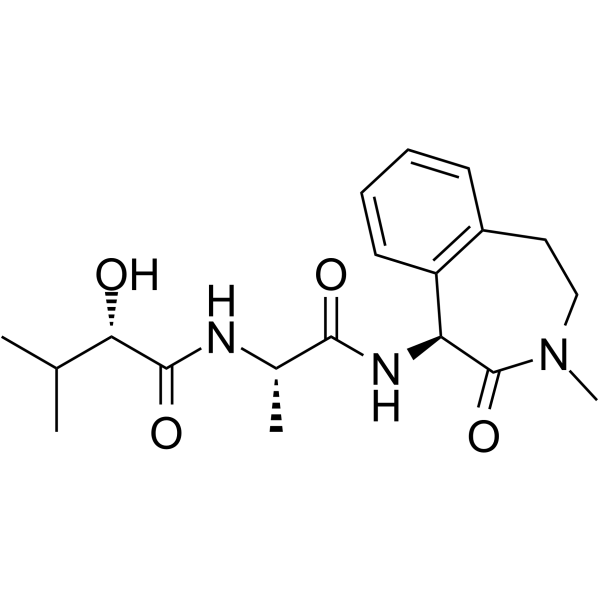
-
- HY-17406
-
|
Ro 40-7592
|
COMT
Amyloid-β
Apoptosis
|
Neurological Disease
Cancer
|
|
Tolcapone (Ro 40-7592) is a selective, orally active and powerful mixed (peripheral and central) COMT inhibitor with an IC50 of 773 nM in the liver . Tolcapone is also a potent inhibitor of α-syn and Aβ42 oligomerization and fibrillogenesis . Tolcapone induces oxidative stress leading to apoptosis and inhibition of tumor growth in neuroblastoma .
|
-
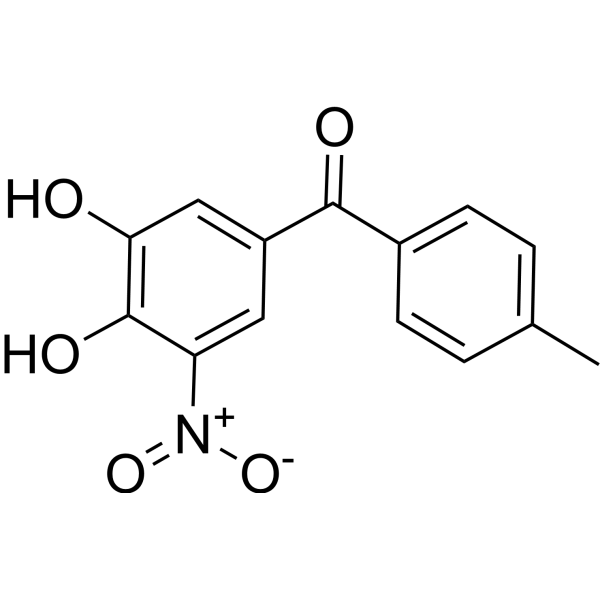
-
- HY-17406S
-
|
Ro 40-7592 d7
|
Isotope-Labeled Compounds
COMT
Amyloid-β
|
Neurological Disease
|
|
Tolcapone-d7 is a deuterium labeled Tolcapone. Tolcapone is a selective, potent and orally active COMT inhibitor. Tolcapone is also a potent inhibitor of α-syn and Aβ42 oligomerization and fibrillogenesis and protect against extracellular toxicity induced by the aggregation of both proteins in PC12 cells[1][2].
|
-

-
- HY-120789
-
|
|
γ-secretase
|
Neurological Disease
|
|
PF-06648671 is a novel, brain-penetrable, and orally active γ-secretase modulator (GSM). PF-06648671 reduces Aβ42 and Aβ40, with concomitant increases in Aβ37 and Aβ38 in vitro. PF-06648671 is used for the study of Alzheimer’s disease .
|
-
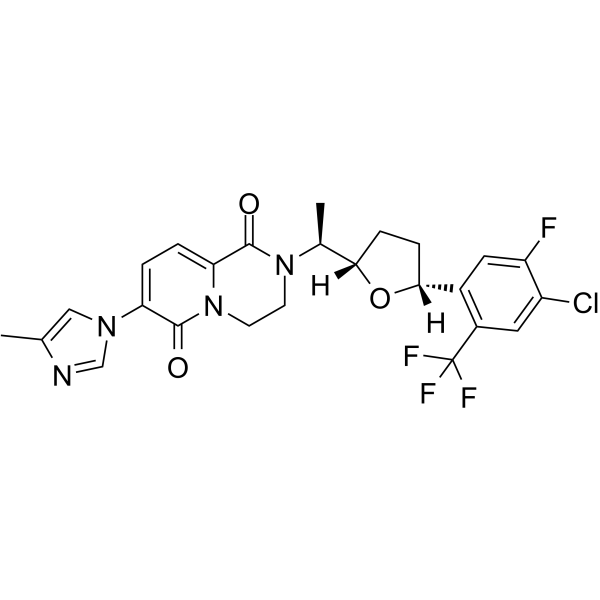
-
- HY-103442
-
|
DAPH
|
EGFR
Amyloid-β
|
Neurological Disease
Cancer
|
|
CGP52411 (DAPH) is a high selective, potent, orally active and ATP-competitive EGFR inhibitor with an IC50 of 0.3 μM. CGP52411 blocks the toxic influx of Ca 2+ ions into neuronal cells, and dramatic inhibits and reverses the formation of β-amyloid (Aβ42) fibril aggregates associated with Alzheimer's disease .
|
-

-
- HY-14533
-
|
K162
|
Amyloid-β
|
Neurological Disease
|
|
K 01-162 (K162) inhibits the fibril formation of Aβ peptides and eliminates their neurotoxicity. K 01-162 binds with Aβ42 peptide with an EC50 value of 80 nM. K 01-162 binds directly to AβO with a KD value of 19 μM. K 01-162 is capable of penetrating the brain and can be used for the research of Alzheimer’s disease .
|
-
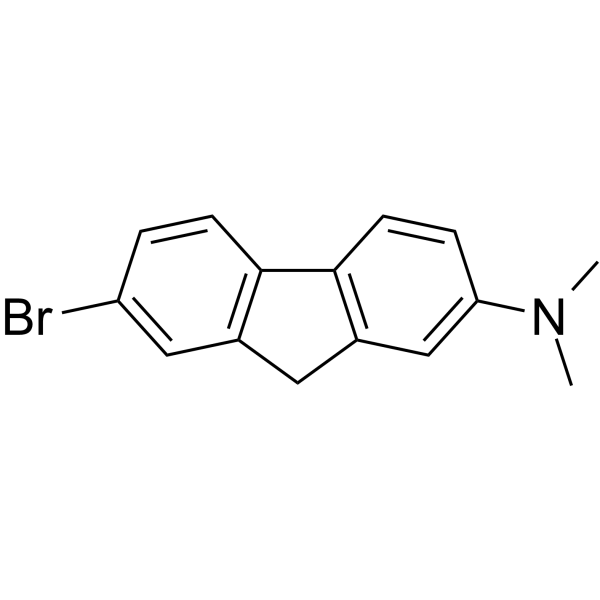
-
- HY-P3846
-
|
|
Amyloid-β
|
Neurological Disease
|
|
(Glu20)-Amyloid β-Protein (1-42) is a slower fibrillizing variant of amyloid β-protein (Aβ). The Glu20 mutation reduces the aggregation propensity of Aβ42 and prevents accumulation of the slowly fibrillizing peptide. Amyloid β-protein is the primary component of both vascular and parenchymal amyloid deposits in Alzheimer's disease .
|
-

-
- HY-14399
-
|
CHF5074; CSP-1103
|
γ-secretase
Apoptosis
|
Neurological Disease
|
|
Itanapraced (CHF5074) is an orally active γ-secretase modulator and a non-steroidal anti-inflammatory derivative. Itanapraced reduces Aβ42 and Aβ40 secretion with IC50 values of 3.6 and 18.4 μM, respectively. Itanapraced inhibits cell apoptosis of hippocampal neurons induced by oxygen and glucose deprivation (OGD). Itanapraced can be used for the research of Alzheimer's disease .
|
-
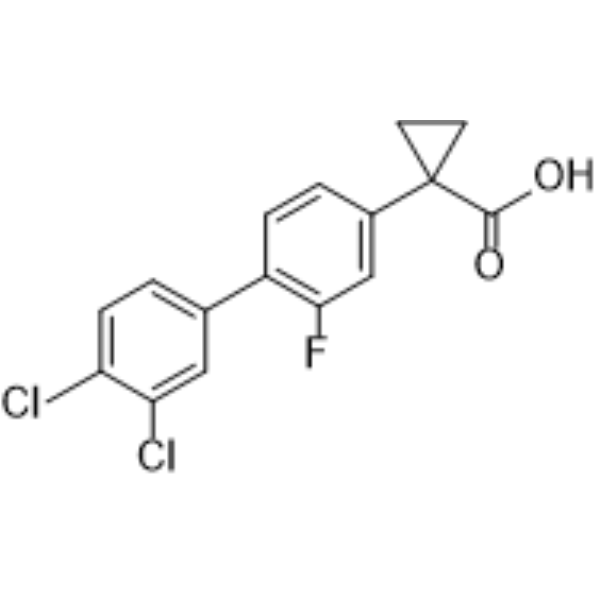
-
- HY-17406S1
-
|
Ro 40-7592-d4
|
Isotope-Labeled Compounds
COMT
Amyloid-β
Apoptosis
|
Neurological Disease
Cancer
|
|
Tolcapone-d4 is the deuterium labeled Tolcapone. Tolcapone (Ro 40-7592) is a selective, orally active and powerful mixed (peripheral and central) COMT inhibitor with an IC50 of 773 nM in the liver[1]. Tolcapone is also a potent inhibitor of α-syn and Aβ42 oligomerization and fibrillogenesis[2]. Tolcapone induces oxidative stress leading to apoptosis and inhibition of tumor growth in neuroblastoma[3].
|
-

- HY-13027
-
DAPT
Maximum Cited Publications
88 Publications Verification
GSI-IX
|
Organoid
γ-secretase
Amyloid-β
Autophagy
Notch
Apoptosis
|
Neurological Disease
Inflammation/Immunology
Cancer
|
|
DAPT (GSI-IX) is a potent and orally active γ-secretase inhibitor with IC50s of 115 nM and 200 nM for total amyloid-β (Aβ) and Aβ42, respectively. DAPT inhibits the activation of Notch 1 signaling and induces cell differentiation. DAPT also induces autophagy and apoptosis. DAPT has neuroprotection activity and has the potential for autoimmune and lymphoproliferative diseases, degenerative disease and cancers treatment .
|
-

- HY-50845
-
|
BMS-708163
|
γ-secretase
Notch
|
Cancer
|
|
Avagacestat (BMS-708163) is a potent inhibitor of γ-secretase, with IC50s of 0.27 nM and 0.30 nM for Aβ42 and Aβ40 inhibition; Avagacestat (BMS-708163) also inhibits NICD (Notch IntraCellular Domain) with IC50 of 0.84 nM and shows weak inhibition of CYP2C19, with IC50 of 20 μM. Avagacestat can be used for Alzheimer disease research.
|
-
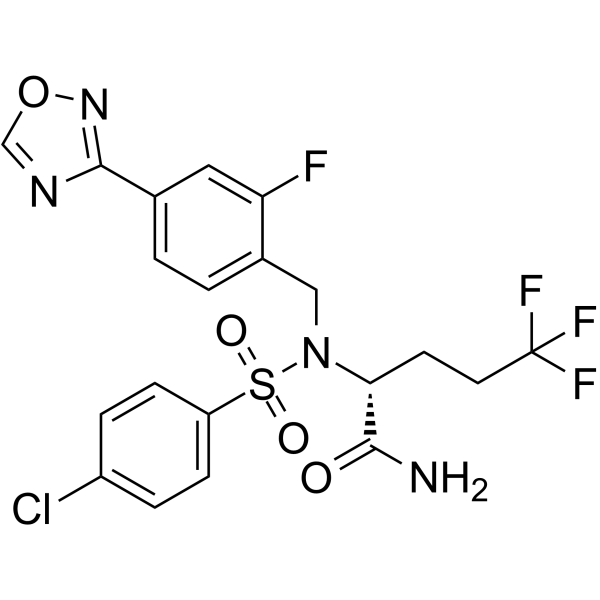
- HY-147720A
-
|
|
γ-secretase
|
Neurological Disease
|
|
γ-Secretase modulator 11 hydrochloride (compound 1o) is a potent and orally active γ-secretase modulator with an IC50 of 0.029 µM. γ-Secretase modulator 11 hydrochloride induces a robust reduction in brain Aβ42 levels. γ-Secretase modulator 11 hydrochloride rescues cognitive deficits exhibited by AD model mice. γ-Secretase modulator 11 hydrochloride has the potential for the research of alzheimer's disease .
|
-
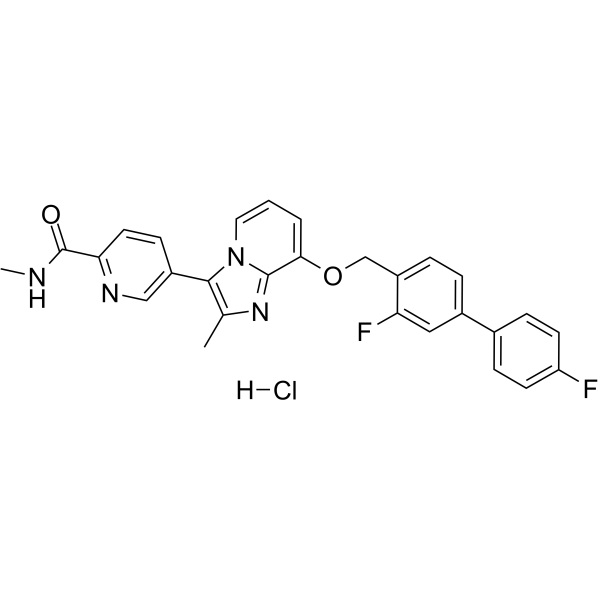
- HY-100604
-
|
|
γ-secretase
Amyloid-β
|
Neurological Disease
|
|
JNJ-40418677 is an orally active modulator of γ-secretase, can cross the blood-brain barrier. JNJ-40418677 inhibits Aβ42 and NS2B-NS3 protease, with IC50s of 200 nM and 3.9 μM, respectively. JNJ-40418677 displays good biological tolerance, can be use for Alzheimer’s disease research .
|
-
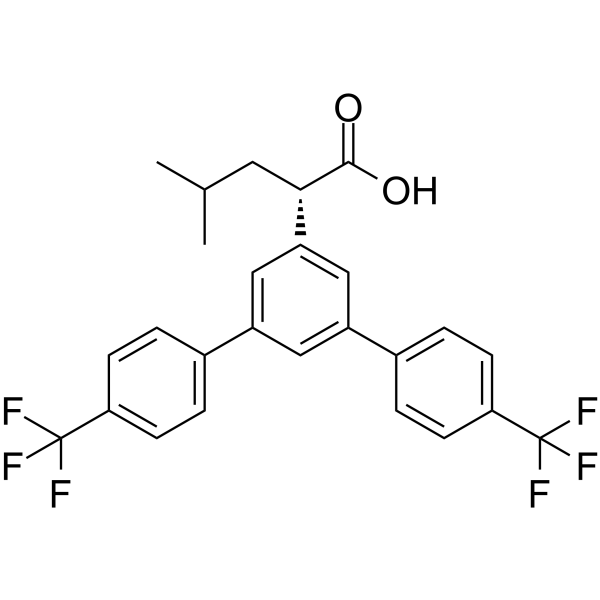
- HY-16659
-
|
|
Ras
|
Neurological Disease
Cancer
|
|
EHT 1864 is an inhibitor of Rac family small GTPases. EHT 1864 directly binds and impairs the ability of this small GTPase to engage critical downstream effectors required for growth transformation. The Kd values are 40, 50, 60, and 230 nM for Rac1, Rac1b, Rac2 and Rac3, respectively. EHT 1864 also potently inhibits other Rac-dependent transformation processes, Tiam1- and Ras-mediated growth transformation. EHT 1864 prevents Aβ 40 and Aβ 42 production in vivo. EHT 1864 dependently suppresses the release of migrasomes from podocytes induced by LPS, PAN, or HG .
|
-

- HY-P3781
-
|
|
Amyloid-β
|
Neurological Disease
|
|
(Met(O)35)-Amyloid β-Protein (1-42) is the oxidation form of Met35 in Aβ42. (Met(O)35)-Amyloid β-Protein (1-42) can yield an oligomer size distribution characteristic of Aβ40. (Met(O)35)-Amyloid β-Protein (1-42) can be used in the research of Alzheimer’s disease (AD) .
|
-

- HY-P5905
-
|
Citrullinated Aβ (1-42); Citrullinated Aβ42
|
Amyloid-β
|
Neurological Disease
|
|
Citrullinated amyloid-β (1-42) peptide (human) (Citrullinated Aβ (1-42)) is a modified form of β-Amyloid (1-42) (HY-P1363) with a citrullination at the Arg5 site. Compared to the unmodified β-Amyloid (1-42), its formation of soluble low-molecular-weight oligomers is enhanced, the rate of fibril formation is reduced, and like unmodified Aβ42, it forms protofibrils comprised of parallel β-sheets .
|
-
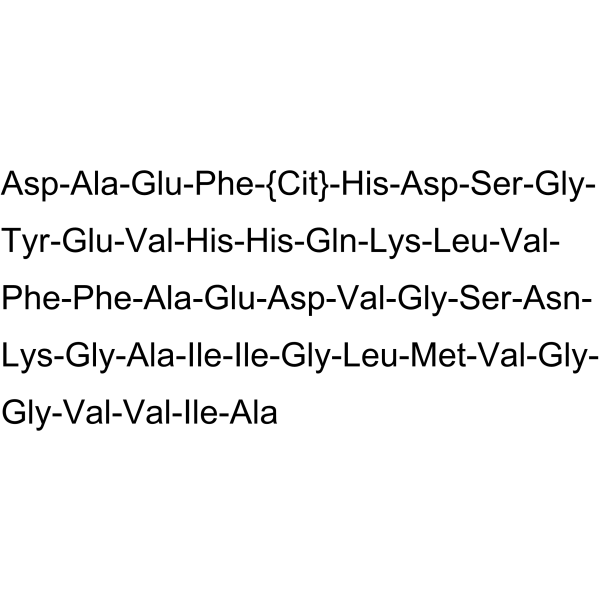
- HY-103539
-
|
|
γ-secretase
|
Metabolic Disease
|
|
3,5-Bis(4-nitrophenoxy)benzoic acid is an inhibitor of γ-secretase. 3,5-Bis(4-nitrophenoxy)benzoic acid causes a decrease in the released levels of Aβ42 and notch-1 Aβ-like peptide 25 (Nβ25). 3,5-Bis(4-nitrophenoxy)benzoic acid, as a marker for fetal hypothyroidism, is a 3,3’-diiodothyronine sulfate (T2S) cross-reactive material in maternal serum .
|
-

- HY-B1588S
-
|
|
Amyloid-β
HIV
11β-HSD
|
Infection
Neurological Disease
Inflammation/Immunology
|
|
Carbenoxolone-d4 is deuterium labeled Carbenoxolone. Carbenoxolone, a semi-synthetic derivative of glycyrrhetinic acid, has previously been used for the management of dyspepsia and peptic ulcer because of its anti-inflammatory properties[3]. Carbenoxolone, a general hemichannel and gap junction inhibitor, has the therapeutic potential of carbenoxolone in the research of chronic liver disease[2]. Carbenoxolone is a suitable candidate for the inhibition of Aβ42 aggregation and the therapeutic potential of Cbx against AD[1]. Carbenoxolone is small molecule Pannexin1 (Panx1,is an ATP release channel) inhibitor, attenuate Panx1 channel activity through modulation of the first extracellular loop[4].Carbenoxolone is an 11β-hydroxysteroid dehydrogenase type 1 (11β-HSD1) inhibitor that converts inactive glucocorticoid into an active form. Carbenoxolone has antiviral activity against DENV infection targeting the virus itself[6].
|
-
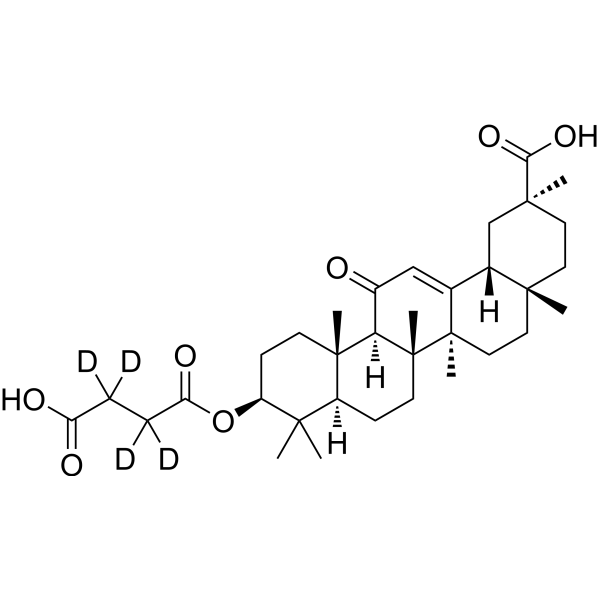
- HY-103537
-
|
|
γ-secretase
Amyloid-β
|
Neurological Disease
|
|
(Rac)-BIIB042 (Compound 10) is an modulator of γ-Secretase. (Rac)-BIIB042 reduces Amyloid-β 42 level with an EC50 value of 0.39 µM. (Rac)-BIIB042 can be used for the study of Alzheimer's disease .
|
-
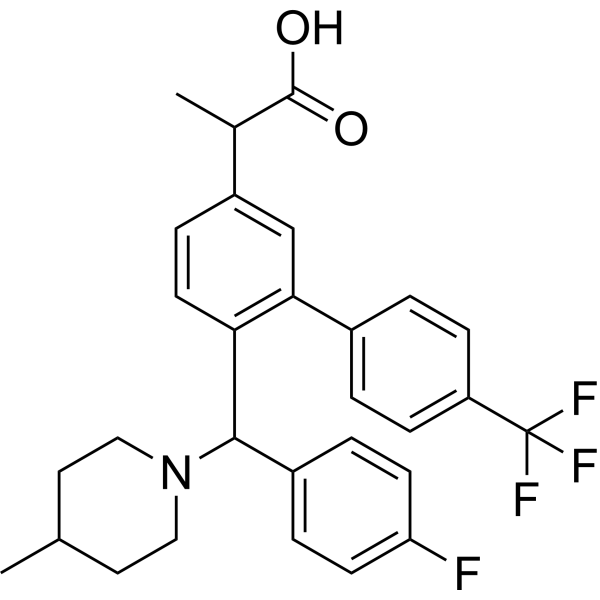
- HY-P1119
-
WRW4
3 Publications Verification
|
Formyl Peptide Receptor (FPR)
|
Neurological Disease
|
|
WRW4, a specific formyl peptide receptor-like 1 (FPRL1) antagonist, inhibits WKYMVm binding to FPRL1 with an IC50 of 0.23 μM. WRW4 specifically inhibits the increase in intracellular calcium by the FPRL1 agonists MMK-1, amyloid beta42 (Abeta42) peptide, and F peptide .
|
-
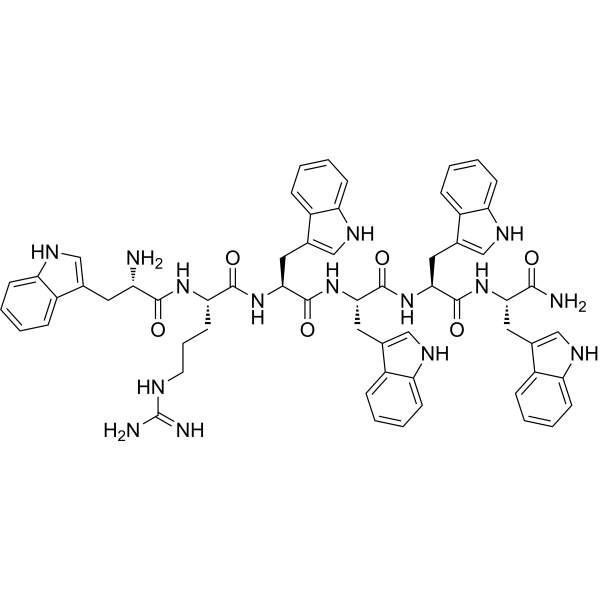
- HY-P1119A
-
|
|
Formyl Peptide Receptor (FPR)
|
Neurological Disease
|
|
WRW4 TFA, a specific formyl peptide receptor-like 1 (FPRL1) antagonist, inhibits WKYMVm binding to FPRL1 with an IC50 of 0.23 μM. WRW4 TFA specifically inhibits the increase in intracellular calcium by the FPRL1 agonists MMK-1, amyloid beta42 (Abeta42) peptide, and F peptide .
|
-
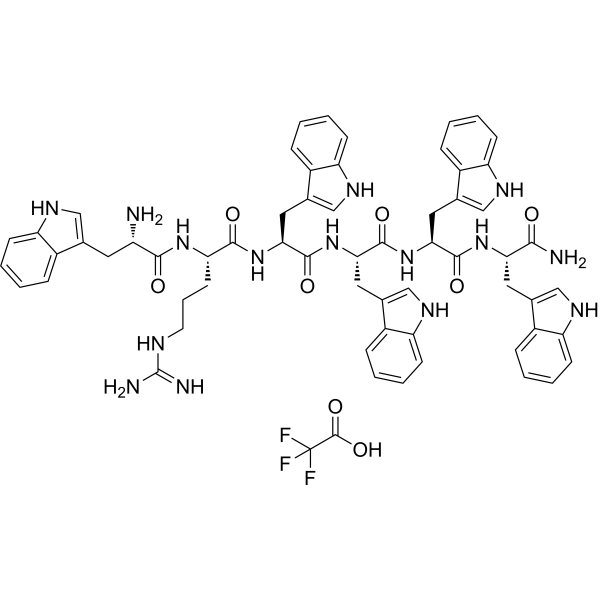
- HY-147720
-
|
|
γ-secretase
|
Neurological Disease
|
|
5-{8-[(3,4'- difluoro [1,1'- biphenyl]-4-yl) methoxy] - 2-methylimidazo [1,2-a] pyridin-3-yl}-n-methylpyridin-2-formamide (1o) showed high potency in vitro and brain exposure, inducing brain a β 42 levels were significantly reduced and showed undetectable inhibition of cytochrome P450 enzymes. In addition, compound 1o showed excellent anti cognitive deficit effect in AD model mice.
|
-
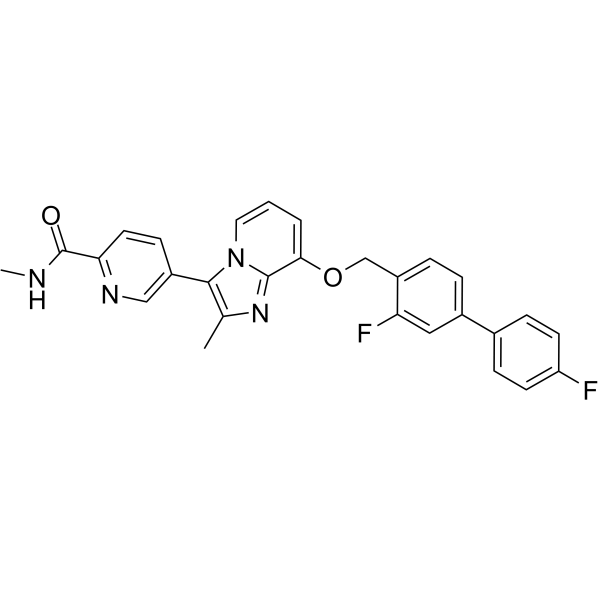
| Cat. No. |
Product Name |
Type |
-
- HY-N0116
-
|
Natural Black 1; Haematoxylin
|
Chromogenic Substrates
|
|
Hematoxylin (Natural Black 1), a naturally occurring flavonoid compound derived from Caesalpinia sappan Linn.. Hematoxylin is a nuclear stain in histology and is also a potent Aβ42 fibrillogenesis inhibitor with an IC50 of 1.6 μM.
|
| Cat. No. |
Product Name |
Target |
Research Area |
-
- HY-P4295
-
|
PADK
|
Cathepsin
γ-secretase
|
Neurological Disease
|
|
Z-Phe-Ala-diazomethylketone binds directly to Aβ42 monomers and small oligomers. Z-Phe-Ala-diazomethylketone inhibits the formation of Aβ42 dodecamers and inhibits Aβ42 fibril formation in the solution. Z-Phe-Ala-diazomethylketone has the potential for neurodegenerative disorders research .
|
-
- HY-P3793
-
|
|
Amyloid-β
|
Neurological Disease
|
|
Amyloid β-Protein (33-42) TFA is the residues 33-42 fragment of the β-amyloid protein. Amyloid β-Protein (33-42) TFA inhibits Aβ42-induced toxicity .
|
-
- HY-P3307
-
|
|
Tau Protein
|
Neurological Disease
|
|
Ac-Val-Gln-aIle-Val-aTyr-Lys-NH2 is serum stable, non-toxic to neuronal cells, and selectivity inhibits the fibrilization of tau over Aβ42.
|
-
- HY-P3846
-
|
|
Amyloid-β
|
Neurological Disease
|
|
(Glu20)-Amyloid β-Protein (1-42) is a slower fibrillizing variant of amyloid β-protein (Aβ). The Glu20 mutation reduces the aggregation propensity of Aβ42 and prevents accumulation of the slowly fibrillizing peptide. Amyloid β-protein is the primary component of both vascular and parenchymal amyloid deposits in Alzheimer's disease .
|
-
- HY-P3781
-
|
|
Amyloid-β
|
Neurological Disease
|
|
(Met(O)35)-Amyloid β-Protein (1-42) is the oxidation form of Met35 in Aβ42. (Met(O)35)-Amyloid β-Protein (1-42) can yield an oligomer size distribution characteristic of Aβ40. (Met(O)35)-Amyloid β-Protein (1-42) can be used in the research of Alzheimer’s disease (AD) .
|
-
- HY-P5905
-
|
Citrullinated Aβ (1-42); Citrullinated Aβ42
|
Amyloid-β
|
Neurological Disease
|
|
Citrullinated amyloid-β (1-42) peptide (human) (Citrullinated Aβ (1-42)) is a modified form of β-Amyloid (1-42) (HY-P1363) with a citrullination at the Arg5 site. Compared to the unmodified β-Amyloid (1-42), its formation of soluble low-molecular-weight oligomers is enhanced, the rate of fibril formation is reduced, and like unmodified Aβ42, it forms protofibrils comprised of parallel β-sheets .
|
-
- HY-P1119
-
WRW4
3 Publications Verification
|
Formyl Peptide Receptor (FPR)
|
Neurological Disease
|
|
WRW4, a specific formyl peptide receptor-like 1 (FPRL1) antagonist, inhibits WKYMVm binding to FPRL1 with an IC50 of 0.23 μM. WRW4 specifically inhibits the increase in intracellular calcium by the FPRL1 agonists MMK-1, amyloid beta42 (Abeta42) peptide, and F peptide .
|
-
- HY-P1119A
-
|
|
Formyl Peptide Receptor (FPR)
|
Neurological Disease
|
|
WRW4 TFA, a specific formyl peptide receptor-like 1 (FPRL1) antagonist, inhibits WKYMVm binding to FPRL1 with an IC50 of 0.23 μM. WRW4 TFA specifically inhibits the increase in intracellular calcium by the FPRL1 agonists MMK-1, amyloid beta42 (Abeta42) peptide, and F peptide .
|
| Cat. No. |
Product Name |
Target |
Research Area |
-
- HY-P990078
-
|
LY3372993
|
Amyloid-β
|
Neurological Disease
|
|
Remternetug is a human immunoglobulin G1-kappa, anti-APP (amyloid beta A4 precursor protein) Aβ42 N3pGlu peptide monoclonal antibody. Remternetug recognizes a pyroglutamated form of Aβ that aggregates into amyloid plaques .
|
| Cat. No. |
Product Name |
Category |
Target |
Chemical Structure |
| Cat. No. |
Product Name |
Chemical Structure |
-
- HY-B0034S1
-
|
|
|
Donepezil-d4 (hydrochloride) is the deuterium labeled Donepezil hydrochloride. Donepezil Hydrochloride (E2020) is a reversible, selective AChE inhibitor with an IC50 of 6.7 nM for AChE activity. Donepezil shows high selectivity for AChE over BuChE[1]. Donepezil exhibits neuroprotective effect on Aβ42 neurotoxicity[2].
|
-

-
- HY-B0034S
-
|
|
|
Donepezil-d5 (hydrochloride) is deuterium labeled Donepezil (Hydrochloride). Donepezil Hydrochloride (E2020) is a reversible, selective AChE inhibitor with an IC50 of 6.7 nM for AChE activity. Donepezil shows high selectivity for AChE over BuChE[1]. Donepezil exhibits neuroprotective effect on Aβ42 neurotoxicity[2].
|
-

-
- HY-17406S
-
|
|
|
Tolcapone-d7 is a deuterium labeled Tolcapone. Tolcapone is a selective, potent and orally active COMT inhibitor. Tolcapone is also a potent inhibitor of α-syn and Aβ42 oligomerization and fibrillogenesis and protect against extracellular toxicity induced by the aggregation of both proteins in PC12 cells[1][2].
|
-

-
- HY-17406S1
-
|
|
|
Tolcapone-d4 is the deuterium labeled Tolcapone. Tolcapone (Ro 40-7592) is a selective, orally active and powerful mixed (peripheral and central) COMT inhibitor with an IC50 of 773 nM in the liver[1]. Tolcapone is also a potent inhibitor of α-syn and Aβ42 oligomerization and fibrillogenesis[2]. Tolcapone induces oxidative stress leading to apoptosis and inhibition of tumor growth in neuroblastoma[3].
|
-

-
- HY-B1588S
-
|
|
|
Carbenoxolone-d4 is deuterium labeled Carbenoxolone. Carbenoxolone, a semi-synthetic derivative of glycyrrhetinic acid, has previously been used for the management of dyspepsia and peptic ulcer because of its anti-inflammatory properties[3]. Carbenoxolone, a general hemichannel and gap junction inhibitor, has the therapeutic potential of carbenoxolone in the research of chronic liver disease[2]. Carbenoxolone is a suitable candidate for the inhibition of Aβ42 aggregation and the therapeutic potential of Cbx against AD[1]. Carbenoxolone is small molecule Pannexin1 (Panx1,is an ATP release channel) inhibitor, attenuate Panx1 channel activity through modulation of the first extracellular loop[4].Carbenoxolone is an 11β-hydroxysteroid dehydrogenase type 1 (11β-HSD1) inhibitor that converts inactive glucocorticoid into an active form. Carbenoxolone has antiviral activity against DENV infection targeting the virus itself[6].
|
-

Your information is safe with us. * Required Fields.
Inquiry Information
- Product Name:
- Cat. No.:
- Quantity:
- MCE Japan Authorized Agent:







































































